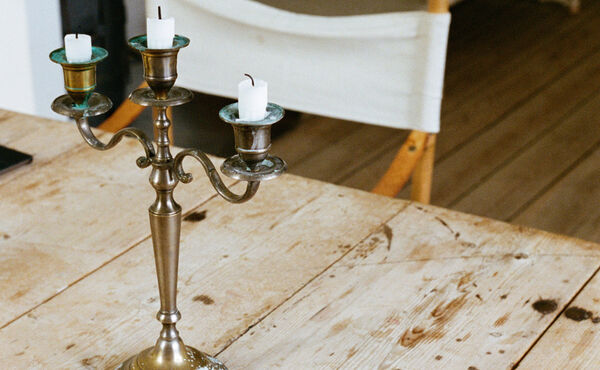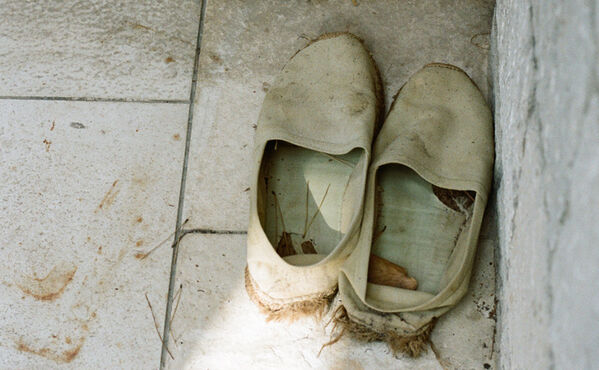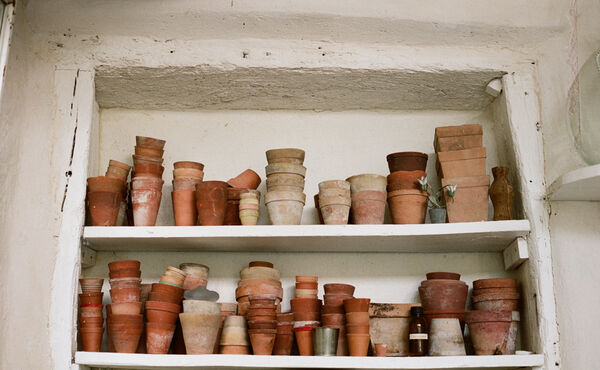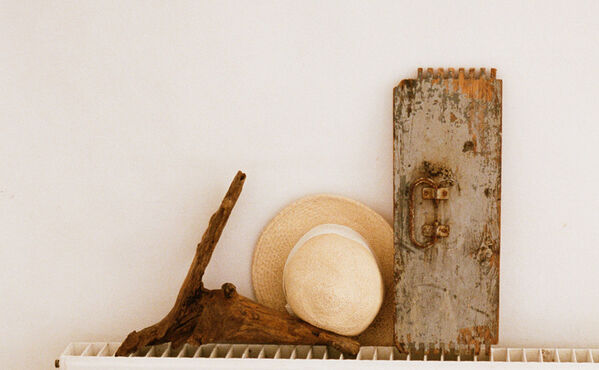Wabi-sabi is having its moment in the West. And for good reason—in a perfection-obsessed society where the new and shiny reigns, wabi-sabi is like a breath of fresh air. It’s an ancient Japanese view of the world that honours life’s natural wear and tear and finds beauty in authenticity and imperfection. We had a chat with wabi-sabi writer Julie Pointer, and she shared some of her secrets to a splendidly imperfect way of life.
The concept of wabi-sabi has been widely and exuberantly embraced in interior design, with naturally worn materials, cracked edges and organic shapes finding their way into more and more interiors outside Japan. But the principles of wabi-sabi extend to all aspects of life, from our day-to-day activities to our relationships.

Author and photographer Julie Pointer beautifully captures the many facets of a wabi-sabi way of life in her book Wabi Sabi Welcome. Applying the concept of wabi-sabi to everyday acts of hospitality, such as hosting a dinner party or sharing a pot of tea with friends, the book radically rethinks our aim for “perfection” when it comes to our homes, our lives and the moments we share with others. It invites us to slow down, to be present in life, and to find joy in life’s delightfully simple pleasures.
Wabi-sabi isn’t just about accepting imperfection—it’s about truly embracing it. What’s the difference?
“Imperfection isn’t just something to be tolerated; it’s an inherent part of life that we should teach ourselves to not only accept but even to celebrate! A wabi-sabi point of view encourages us to treat flaws as a beautiful part of the whole—a natural part of life—and to even bring them to the forefront as potential strengths rather than weaknesses.
For example, when a piece of pottery gets cracked in Japan there’s a lovely process called kintsugi, literally meaning “golden repair”, where the crack is fixed with a gold-painted glue. Instead of trying to hide the imperfection, the repair is made more obvious with a gold seam running through the pottery. In the same way, wabi-sabi teaches us to reconsider what we generally might consider an imperfection that we want to disguise, and to instead embrace it as the thing that makes an object, an experience, or ourselves original. Things like an old dining table with wine-stained wood, laugh-lines around our mouths, or a hand-woven sweater with irregular stitches.”
A wabi-sabi point of view encourages us to treat flaws as a beautiful part of the whole—a natural part of life—and to even bring them to the forefront as potential strengths rather than weaknesses.


Each chapter of your book is dedicated to a different place where you encountered wabi-sabi. Can you tell us more about wabi-sabi in Japan, where it originated, and in California, where you are from? How does wabi-sabi fit into everyday culture in those different places?
“Naturally I can speak more closely to how I’ve experienced wabi-sabi in California, but from what I understand, wabi-sabi is a concept so embedded in Japanese culture that everyone knows what it is but finds it very difficult to describe. For the Japanese, wabi-sabi embodies both a kind of beauty and a way of life—it is about attention to detail, ephemerality, ceremony, and most importantly, living simply and in tune with nature.
The ways that I witnessed the wabi-sabi way of being in Japan were primarily through seeing how people’s homes are designed and lived in. The homes I spent time in were simple, spare, imbued with nature and modern in a design-sense, but also full of warmth and character. While possessions and decorations were few, what they did have around the house was very personal, mostly handmade, inspired by nature, eclectic and carefully selected. Each piece of dishware was a unique, handmade original, and while none of the dishes or tableware were matching, necessarily, the collective overall look and feel was very cohesive.
As for California, the way people live out wabi-sabi is a bit different, as you might suspect. If the Japanese are known for formality and precision—imagine how the Japanese carefully and respectfully bow when they meet each other—Californians are pretty much the extreme opposite. At least in the California I know, the wabi-sabi way is more readily lived out in a laidback, “hang loose” kind of way, with sand tracked through the house and driftwood casually arranged as sculpture. People find beauty in the mundane, fleeting moments of life, much like the Japanese do, but it might be through watching a surfer on a wave or having a backyard barbecue, rather than performing a ritualistic tea ceremony or practicing Zen Buddhism.”


What are your top tips for bringing wabi-sabi into our day-to-day lives?
“Wabi-sabi invites us to live in the present moment. It’s a laid-back, relaxed, down-to-earth approach to life, but it’s also not haphazard—it demands a kind of careful, loving attention to the world around us. One good place to start is to simply slow down and bit and start paying attention to the perfectly imperfect moments of beauty throughout the day.
Another tip is to overlap beauty with utility wherever you can—for instance, look for nice looking storage baskets, a pretty water pitcher for the table or even a beautifully designed toilet-bowl brush; it’s the little things that make a difference in the spaces we live.
And lastly, make do with what you have—embracing wabi-sabi is all about recognising the beauty in humble and imperfect things, rather than always needing or desiring more. In this spirit, make your home personal by incorporating items that likely only have value to you, such as family photographs, mementos collected on trips, or art made by your children.”

.jpg?sw=600&sh=370&sm=fit&cx=1107&cy=111&cw=3128&ch=1929&sfrm=jpg)

.jpg?sw=600&sh=370&sm=fit&cx=0&cy=0&cw=600&ch=370&sfrm=jpg)
